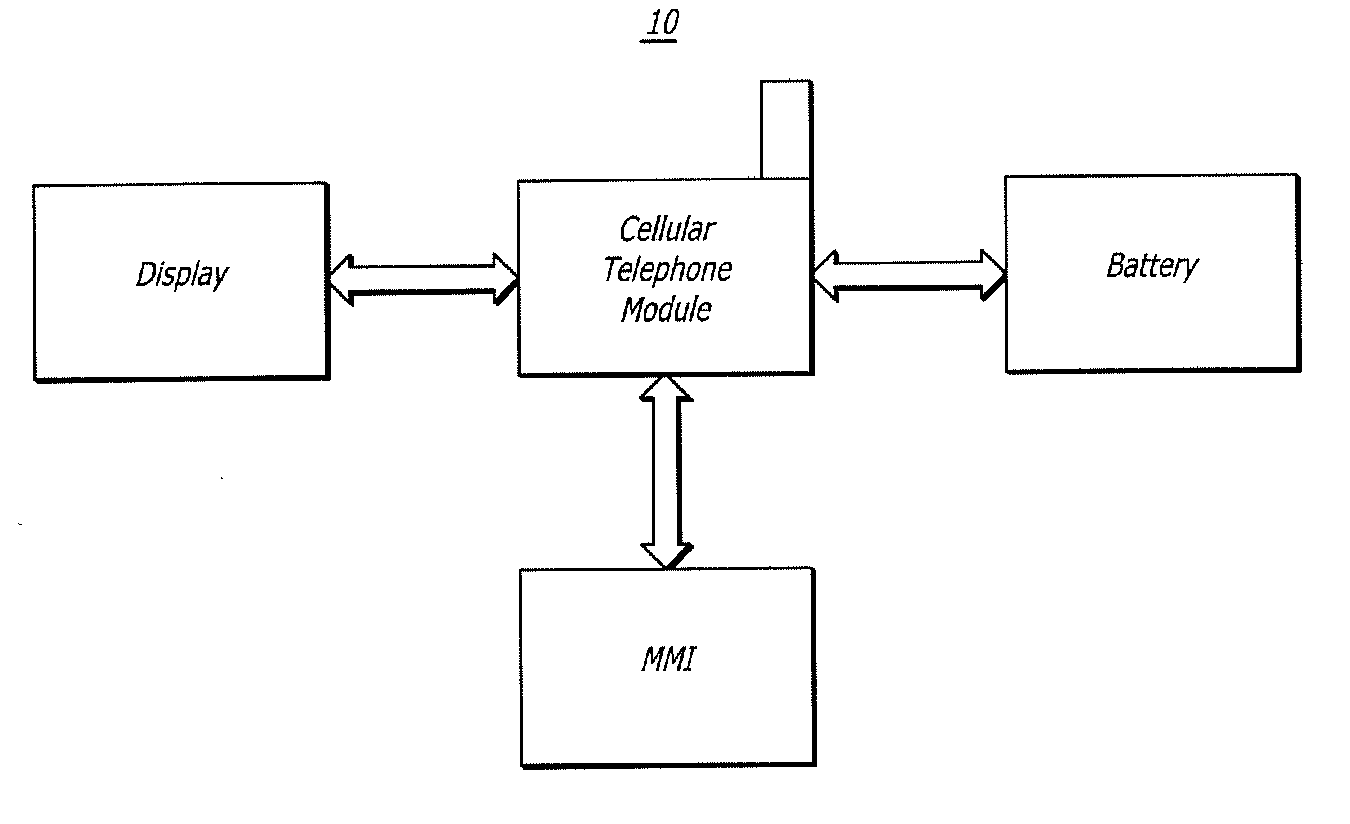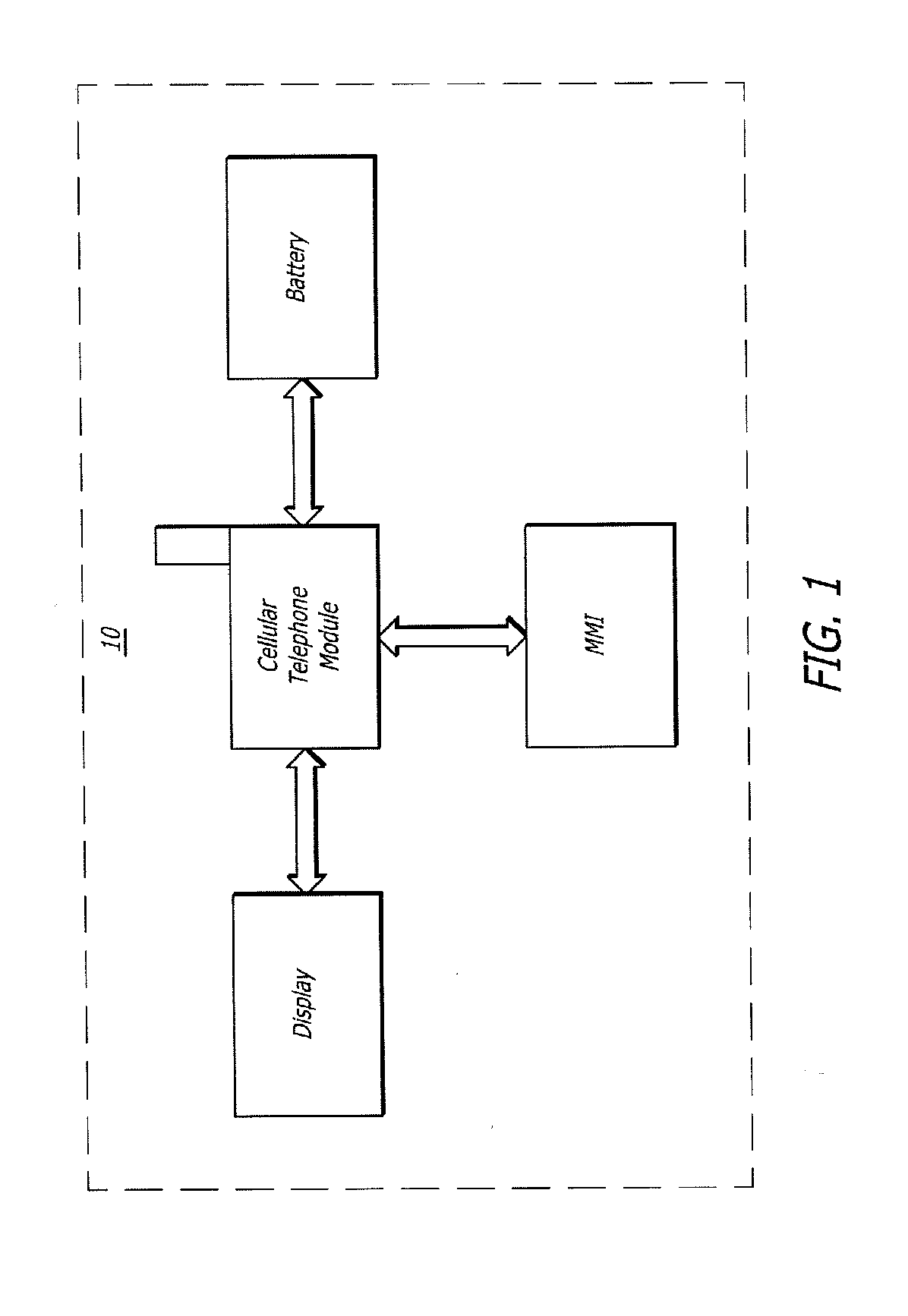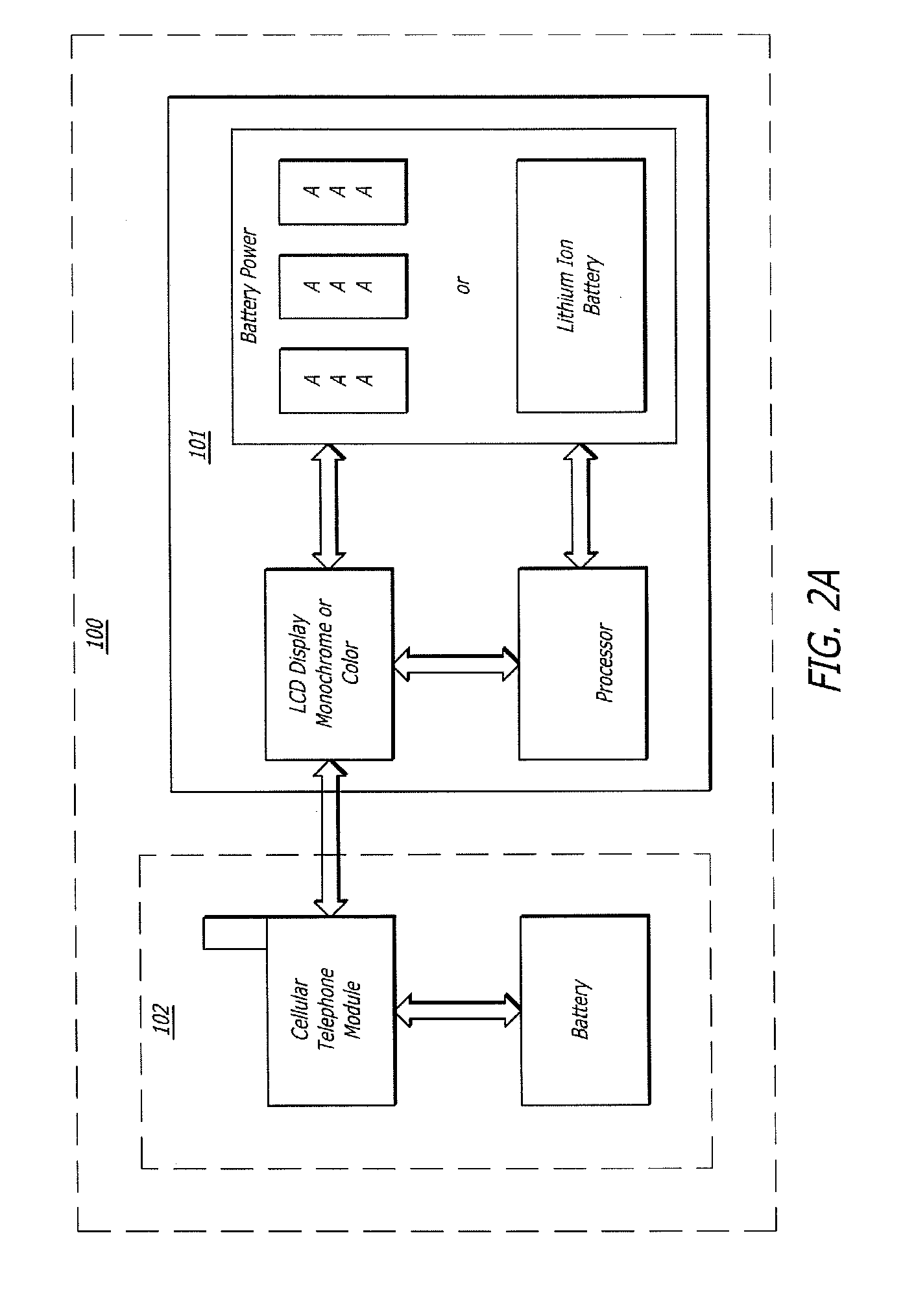Personal electronic device with a dual core processor
- Summary
- Abstract
- Description
- Claims
- Application Information
AI Technical Summary
Benefits of technology
Problems solved by technology
Method used
Image
Examples
example a
In one example, shown in FIG. 4D, the default display is a touchscreen 800×300 TFT LCD 307, and is driven by the StrongARM processor 302 LCD controller 381. The StrongARM processor 302 and embedded operating system CE.net is used for running the LCD touchscreen driver, as well as the main menu, web browsing, e-mail and the cell phone keypad applications.
When the user determines that he or she desires to run the XP operating system, FIG. 4E, the user presses the “Go to Desktop” button on the main menu, FIG. 4F, displayed on LCD, FIG. 4D, 307 and FIG. 3C, 307. The XP operating system, FIG. 4E, resides on the hard disk, FIG. 3C, 325, utilizing the Pentium III processor, FIG. 3C, 320, the Graphics and Memory Controller, FIG. 4D321 and FIG. 3C, 321, and the 82801 Integrated Controller Hub, FIG. 3C,
The LCD, FIG. 4D, 307 and FIG. 3C, 307, are driven by the Graphics and Memory Controller FIG. 4D, 381 and FIG. 3C, 381. The main menu application, FIG. 4F, which uses the CE.net operating syste...
PUM
 Login to View More
Login to View More Abstract
Description
Claims
Application Information
 Login to View More
Login to View More - R&D
- Intellectual Property
- Life Sciences
- Materials
- Tech Scout
- Unparalleled Data Quality
- Higher Quality Content
- 60% Fewer Hallucinations
Browse by: Latest US Patents, China's latest patents, Technical Efficacy Thesaurus, Application Domain, Technology Topic, Popular Technical Reports.
© 2025 PatSnap. All rights reserved.Legal|Privacy policy|Modern Slavery Act Transparency Statement|Sitemap|About US| Contact US: help@patsnap.com



